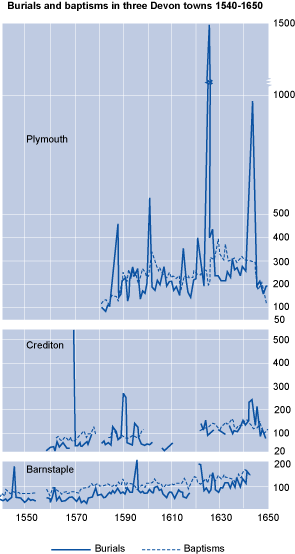Devon
The graph below shows the experiences of three towns in Devon: Plymouth, Crediton and Barnstaple.

Unlike the case of Siena, in this example we can see both the number of burials and the number of baptisms.
This is very important because we can not only identify the plague years, but also the extent to which baptisms exceeded burials (births were higher than deaths) in normal years thus ensuring that the population was able to grow naturally.
In Plymouth, the largest town, the epidemic peaks were higher and more frequent and, when taken together, probably cancelled out any births excess that might occur in the normal, non-plague years.
But in Barnstaple, where the epidemics were smaller and fewer, population could grow naturally even without a net flow of migrants to the town from the countryside.
This simple comparison suggests that the demographic impact of plague was highly variable; repeated epidemics in the larger towns meant their grown became dependent on attracting migrants from outside, while in the smaller towns and villages, where a full-blown epidemic was a rare occurrence by the seventeenth century, population could expand fairly rapidly.